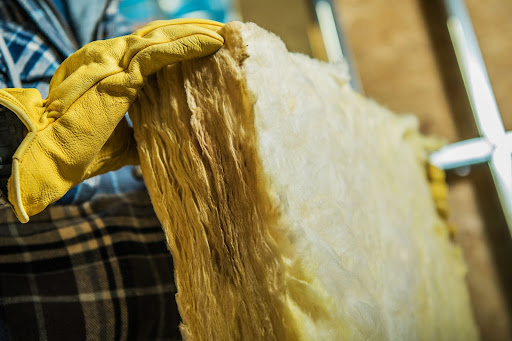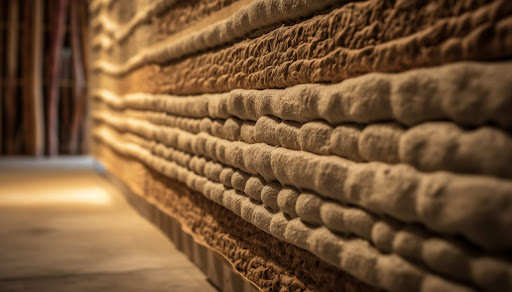When it comes to home improvement, choosing the right types of attic insulation can make a significant difference in both comfort and energy costs. Proper insulation not only keeps your home warm in the winter but also cool during the hot summer months. With various options available, knowing the different types of attic insulation can help you make an informed decision tailored to your home’s specific needs.
Discover the Best Types of Attic Insulation for Your Home – Get a FREE Consultation Today!
Benefits of Understanding the Types of Attic Insulation
When you invest the time to understand the different types of attic insulation, you’re not just making a one-time home improvement decision; you’re making a long-term investment in your home’s comfort, energy efficiency, and value.
Here’s why understanding the types of attic insulation matters:
- Energy Efficiency: The right insulation type can significantly reduce your energy bills, making your home more eco-friendly.
- Improved Comfort: Knowing the types of attic insulation helps you select the one that will keep your home comfortable year-round, from scorching summers to frigid winters.
- Increased Home Value: Quality insulation can add to your home’s resale value. Potential buyers often look for homes that are well-insulated, translating to lower energy costs for them.
- Health Benefits: Certain types of attic insulation can also improve the indoor air quality by acting as a barrier to allergens and pollutants.
- Reduced Maintenance: The right type of insulation can help in moisture management, thus reducing the risk of mold and water damage.
Make an Informed Choice! Schedule Your Free Consultation Today to Find Out Which Type of Insulation is Best for Your Home or Business!

A Deep Dive into the Types of Attic Insulation
Choosing the right insulation services for your attic is crucial for energy efficiency, comfort, and ultimately, cost savings. In this section, we’ll break down the various types of attic insulation so you can make an informed decision.
Fiberglass Insulation
Fiberglass insulation is one of the most commonly used types of attic insulation. It’s made from fine glass fibers and is usually available in batts or rolls. It’s easy to install and offers good thermal performance, making it a popular choice for homeowners.
- Features: Made from fine glass fibers, easy to install, and fire-resistant.
- Pros: Affordable, good thermal performance, non-flammable.
- Cons: May irritate skin, not ideal for high-moisture areas.
Cellulose Insulation
Cellulose insulation is an eco-friendly option made primarily from recycled paper. Treated to be fire-resistant, it’s often blown into attic spaces to provide a thermal barrier. It’s a cost-effective choice and offers good insulation properties.
- Features: Made from recycled paper, treated for fire resistance.
- Pros: Eco-friendly, good thermal performance, affordable.
- Cons: Can settle over time, not fire-resistant without treatment.
Spray Foam Insulation
Spray foam insulation is a chemical-based insulation material that expands upon application, filling gaps and creating an airtight seal. Known for its excellent thermal performance, spray foam is versatile but usually requires professional installation due to the complexity of the application.
- Features: Chemical-based, expands to fill gaps, excellent thermal performance.
- Pros: Creates an airtight seal, high R-value, versatile.
- Cons: Expensive, requires professional installation.
Mineral Wool Insulation
Mineral wool insulation is made from rock or slag fibers and is known for its fire resistance and soundproofing capabilities. Although it’s a bit more expensive than other types, its unique features make it a worthwhile consideration for specific needs.
- Features: Made from rock or slag fibers, fire-resistant.
- Pros: Fire-resistant, good for soundproofing.
- Cons: More expensive, can be harder to find.
Comparison Table: Pros and ConsVarious of Types of Attic Insulation
Choosing the right insulation for your attic is crucial for maximizing energy efficiency and comfort. This comparison table lays out the pros and cons of different types of attic insulation, providing a straightforward way for you to evaluate your options. Use this resource to get a quick overview and make a more informed decision.
Type of Insulation |
Pros |
Cons |
|---|---|---|
| Fiberglass | Affordable, Fire-resistant | May irritate skin |
| Cellulose | Eco-friendly, Affordable | Settles over time |
| Spray Foam | High R-value, Airtight | Expensive, Professional install |
| Mineral Wool | Fire-resistant, Soundproof | Expensive, Less available |
Cost of Different Types of Attic Insulation:
Understanding the cost of attic insulation is crucial for budgeting your home improvement project. The cost can vary significantly based on the type of insulation you choose, and it’s usually calculated per square foot. Below, we’ve compiled a table to give you a better idea of what you might expect to spend.
Types of Attic Insulation Cost Comparison Table:
Type of Insulation |
Cost Per Square Foot |
|---|---|
| Fiberglass Insulation | $0.40 – $0.80 |
| Cellulose Insulation | $0.70 – $1.20 |
| Spray Foam Insulation | $0.90 – $1.50 |
| Mineral Wool Insulation | $1.00 – $1.50 |
How to Choose Among the Types of Attic Insulation
When it comes to selecting the most suitable type of attic insulation, several factors come into play. Your local climate, the structure of your home, and your budget are all significant considerations.
To make the best choice, consider the following:
- Climate: Different insulation materials have varying R-values, which is a measure of thermal resistance. Choose a material that performs well in your specific climate.
- Home Structure: The age and condition of your home can also impact the effectiveness of certain types of attic insulation. For example, older homes may benefit from the air-sealing properties of spray foam.
- Budget: While upfront costs are important, also consider long-term savings. Some materials may be more expensive initially but offer greater energy savings in the long run.
- Environmental Impact: If sustainability is important to you, look for eco-friendly options like cellulose insulation, which is made from recycled materials.
By weighing these factors, you’ll be better equipped to choose the right types of attic insulation for your specific needs.
ROI of Insulating Your Attic
When you invest in proper attic insulation, you’re not just improving your home’s comfort and energy efficiency; you’re also investing in its financial future. Understanding the ROI of different types of attic insulation can offer a new perspective on your initial investment.
A well-insulated attic can:
- Reduce Energy Costs: A well-insulated attic can save you a considerable amount on your energy bills over time.
- Increase Home Value: High-quality insulation can make your home more attractive to potential buyers, offering a competitive edge in the market.
- Pay You in Tax Benefits: Some regions offer tax incentives for homes that meet specific energy-efficiency standards.
Taking these factors into account can make your decision on the types of attic insulation even more worthwhile.
Best Insulation for Attics
When it comes to attics, certain types of insulation tend to perform better than others. Fiberglass and cellulose insulation are generally recommended for attic spaces due to their excellent thermal performance and moisture resistance. However, if you’re willing to invest in higher upfront costs for long-term benefits, spray foam insulation can provide the best sealing and R-values, ensuring that your attic is as energy-efficient as possible.
Best Insulation for Crawl Spaces
Crawl spaces can be challenging to insulate due to their limited access and potential for moisture problems. Spray foam and rigid foam board insulation are often recommended for these areas due to their moisture resistance and high R-values. They can create an effective barrier against both thermal and moisture issues, offering a long-lasting solution for your crawl space.
Best Insulation for Basements
Basement insulations often require specialized types of insulation that can handle potential moisture and temperature fluctuations. Closed-cell spray foam is commonly used in basements for its moisture resistance and high R-values. Alternatively, rigid foam boards can also be a good option, offering both moisture resistance and ease of installation.
By adding these sections, you’ll offer a comprehensive guide that doesn’t just explain the types of attic insulation, but also provides specific recommendations for other crucial parts of the home. You’re now fully equipped to make the most informed decision possible.
Consult Us for Expert Advice on Types of Attic Insulation
Your journey to a more energy-efficient home doesn’t have to be a solitary one. We’re here to offer expert advice and consultation on the best types of attic insulation tailored to your specific needs. Don’t hesitate to contact us for a personalized consultation today.
Installation and Maintenance for Different Types of Attic Insulation
The types of attic insulation you’re considering not only differ in cost and effectiveness but also in installation and maintenance requirements.
Below, we discuss what you should expect for different insulation types:
- Fiberglass Insulation: This type is often available in batts or rolls, making it relatively easy to install. However, it’s crucial to fit it tightly to avoid gaps that compromise its effectiveness. Maintenance is generally low, but it can be susceptible to moisture damage.
- Cellulose Insulation: Usually blown in, cellulose insulation requires specialized equipment for installation. It’s fire-resistant and has higher R-values but can settle over time, requiring occasional top-ups.
- Spray Foam Insulation: This requires professional installation to ensure it’s applied correctly. Once it’s in, however, it provides excellent sealing and requires little to no maintenance.
- Mineral Wool Insulation: This comes in batts similar to fiberglass and is relatively simple to install. It’s fire-resistant and doesn’t require much maintenance, but it can be more expensive.
By understanding the installation and maintenance requirements for different types of attic insulation, you can make a more informed choice tailored to your home’s needs.
Types of Attic Insulation: Final Thoughts
As you’ve seen, the types of attic insulation available offer various benefits and drawbacks. Your choice will depend on multiple factors such as your local climate, home structure, and budget. Keep these considerations in mind as you make your decision to ensure long-lasting comfort and energy efficiency for your home.
You’re now equipped with the information you need to make a smart choice. But if you still have questions or concerns, don’t hesitate to seek expert advice. Contact us today for a consultation to find the best types of attic insulation for your specific needs.
Related Blog Posts:
- How Long Does the Restoration Process Take for Homes With Water Damage?
- What to Do If Your Home Has Water Damage?
- Signs of Water Damage in the Basement Walls
- Water Damage & Mold: Everything You Need To Know in 2023
- Things You Should Know About Water Damage
- Who Do I Call After My House Has Water Damage Restore?
- What Causes Water Damage to Floors and Walls
Related Services:
Our service areas:
Get A Free Estimate

